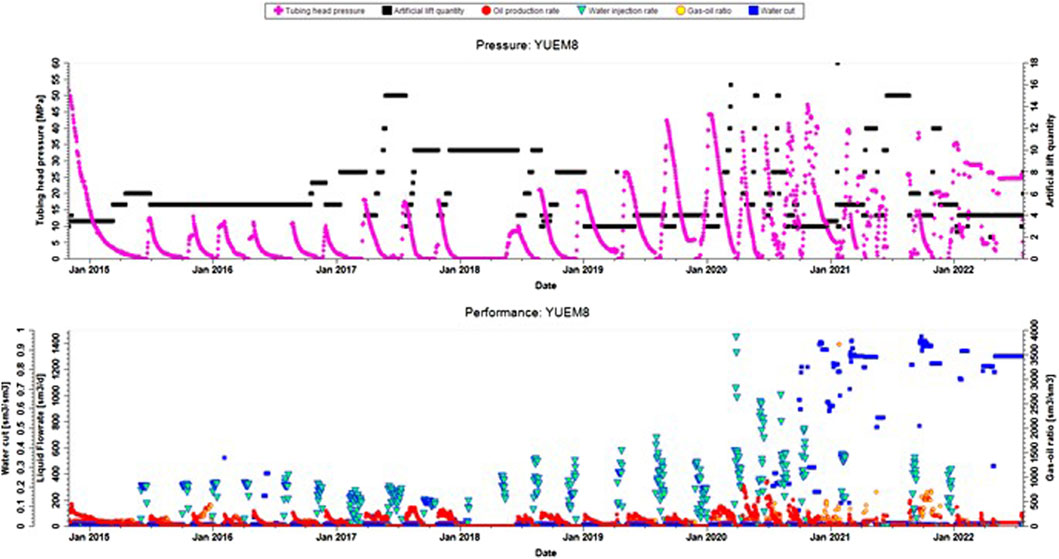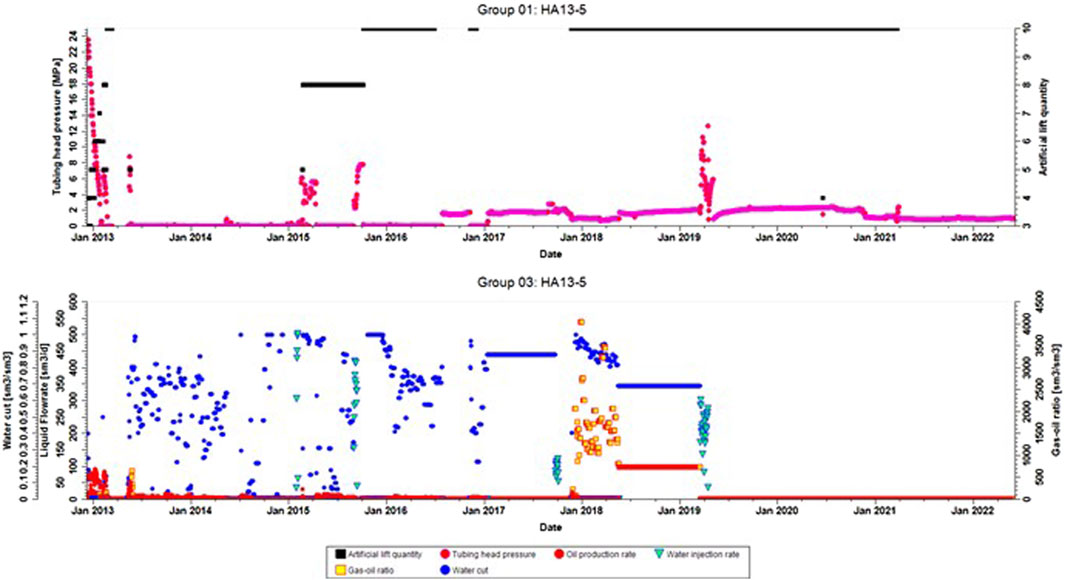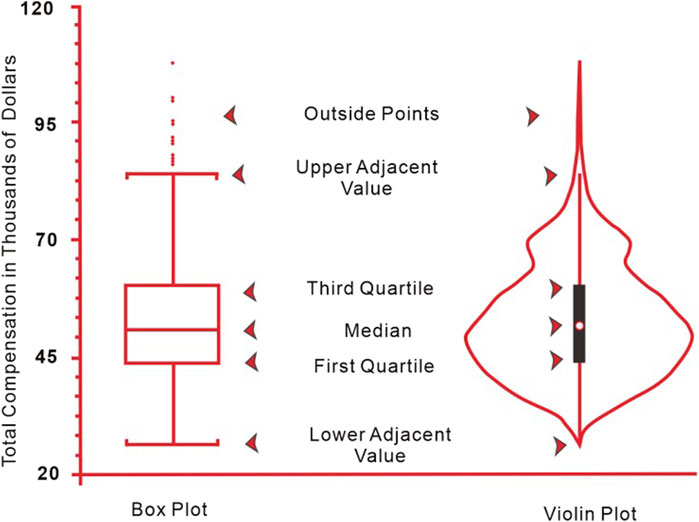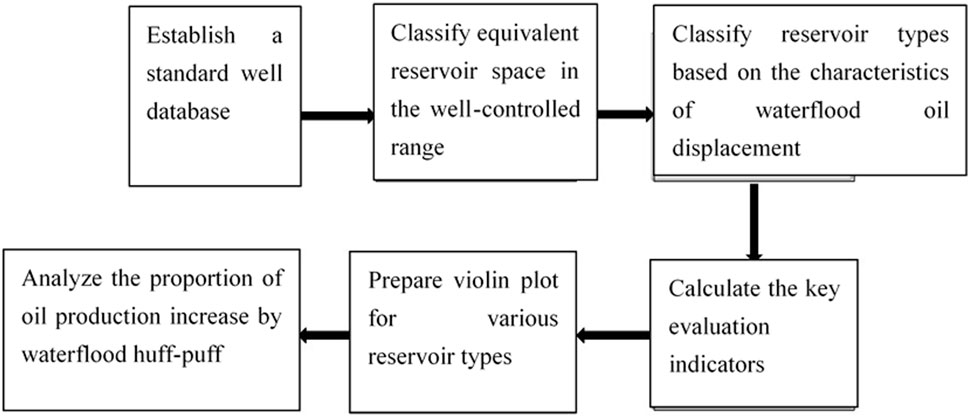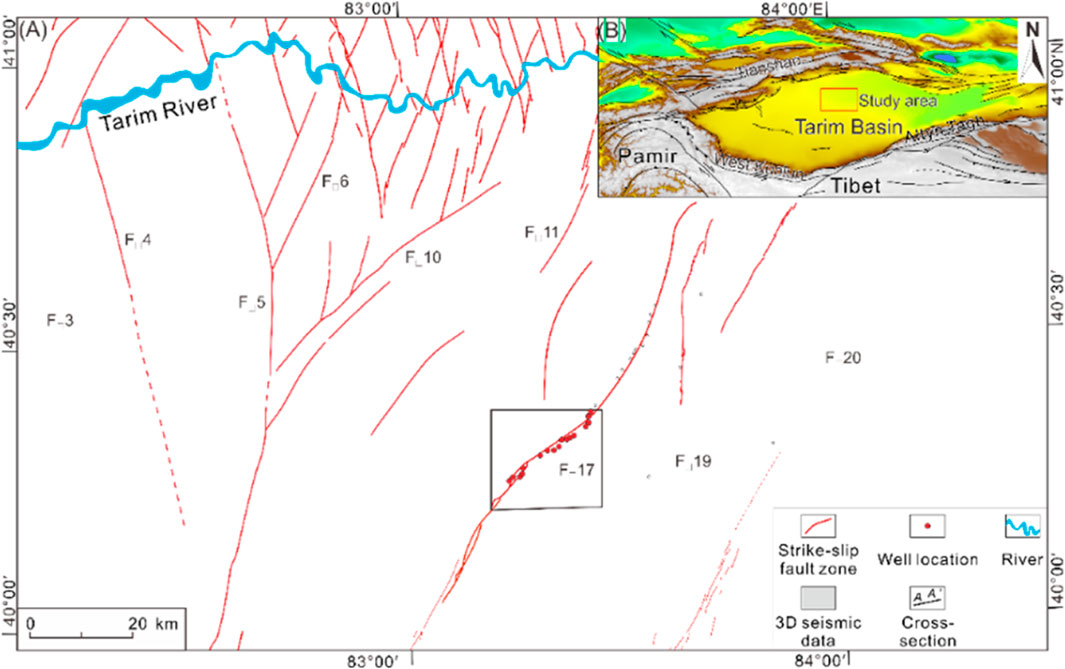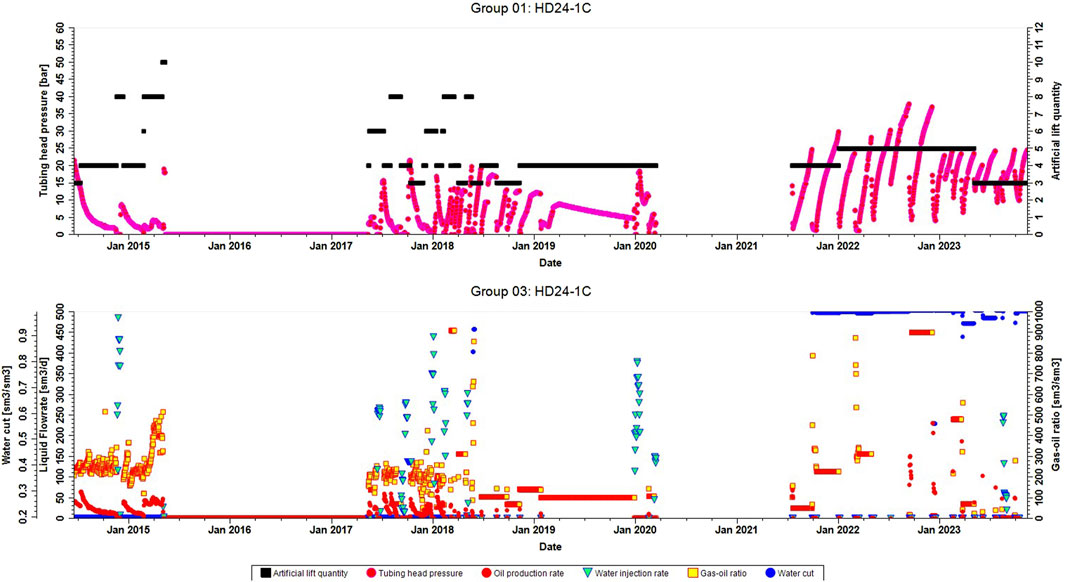- 1PetroChina Hangzhou Research Institute of Geology, Hangzhou, China
- 2Key Laboratory of Carbonate Reservoir, China National Petroleum Corporation, Hangzhou, China
- 3Research Institute of Petroleum Exploration and Development, PetroChina Tarim Oilfield Company, Korla, China
Introduction: More than two billion tons of oil reserves have been discovered in the fractured-cavity type carbonate reservoirs in Tarim Basin, which is a key field for increasing reserves and production in the future. This type of oil reservoirs is characterized by extremely high heterogeneity, and waterflood huff-puff oil displacement is generally used for secondary development of the oil reservoirs. The conventional methods are dominated by qualitative evaluation, which are insufficient to predict the oil production increase by waterflood huff-puff in various karst zones.
Methods: The new method developed in this study involves four aspects, i.e., establishing a standard well database, optimally selecting the key development indicators, equivalent classification of reservoir space type, and optimally selecting the classification and evaluation methods for oil production increase by waterflood huff-puff. From the perspective of reservoir space type, the result of waterflood huff-puff oil displacement of multi-cave type reservoir (large scale) is better than that of relatively isolated cave type reservoir, followed by the fractured-vuggy type reservoir.
Results and discussion: The new method shows advantages in the following aspects: 1) The differences in reservoir geological genesis and spatial structure characteristics in various karst zones are involved; 2) The difference in internal filling features of the same type of reservoir is integrally determined based on the changes in production performance; 3) The actual development characteristics of waterflood huff-puff oil displacement wells in various karst zones are systematically analyzed, and the criteria for selecting standard wells is formulated; 4) The violin plot is introduced as the main study tool for predicting and discriminating oil production increase by waterflood huff-puff displacement. Therefore, the new method is more capable of predicting the oil production increase by waterflood huff-puff in various karst zones.
1 Introduction
Carbonate oil reservoirs are one of the most important fields for petroleum exploration and development in the world, with proven reserves accounting for 52% and oil production accounting for 60% (Yong et al., 2022). The proven oil reserves of the fractured-cavity type carbonate oil reservoirs in central and western China account for about 67% of the total volume in China, which is one of the major fields for increasing oil reserves and production. Since the discovery of Fuman and Shunbei oil and gas fields in 2014, the development of ultra-deep the fault-controlled fractured-cavity type oil reservoirs has moved towards deeper fields. Currently, the burial depth of oil reservoirs in the main production areas exceeds 6,000 m, and oil reserves of more than two billion tons have been discovered in the ultra-deep fields, which is a major exploration and development field soon.
Compared to clastic rock reservoirs, marine carbonate rock reservoirs are characterized by extremely high heterogeneity, and the reservoir space is classified into three types, i.e., fractured-cavity type, vuggy type, and fractured-vuggy type. Among them, the reservoir space of carbonate oil reservoirs in central and western China is dominated by fractured-cavity type. At present, the proven fractured-cavity carbonate oil reservoirs are mainly distributed in the Ordovician Yijianfang Formation and Yingshan Formation in Tarim Basin. Exploration and development practice shows that the fractured-cavity type carbonate reservoirs are generally distributed in buried hill karst zone, the interlayer karst zone, and the fault-controlled zone. The reservoir types, spatial distribution characteristics and internal structure features in various karst zones are different (Zhang et al., 2017; Zheng et al., 2019; DING et al., 2020; Yang et al., 2020; Yuan, 2020; Lyu et al., 2021), which directly affect the development results of this type of oil reservoirs.
By considering the actual geological characteristics of spatially discrete and discontinuous distribution of the fractured-cavity type carbonate reservoirs, the development methods such as natural energy development, pumping development by pumping unit, and waterflood huff-puff oil displacement have been researched after years of exploration and development practice. Limited by the objective conditions such as reservoir genesis and distribution pattern, there are relatively few oil reservoir units with a large connection area that flooding well network can be established, and the secondary oil recovery of this type of oil reservoirs mainly relies on the development method of waterflood huff-puff oil displacement. After conducting pilot tests, some scholars have conducted research on the development mechanism, development characteristics, well location optimal selection, and development results of waterflood huff-puff oil displacement (Luo et al., 2007; Luo et al., 2008; Xingwan, 2008; Yuanshuai et al., 2008; Xiujuan and Guangqing, 2009; Shuang and Yun, 2010; Cao et al., 2014; Xue et al., 2016). However, due to the complex reservoir space types and internal fluid flow regime, the scientific and high-efficiency quantitative evaluation of recoverable reserves is a key issue after determining the well location.
When predicting the recoverable reserves of this type of oil reservoirs in a single well, the oil displacement volume by waterflood huff-puff is a key study point. Currently, the qualitative evaluation method is dominant for evaluating waterflood huff-puff oil displacement of the fractured-cavity type oil reservoirs, and the final evaluation results only provide the quality of waterflood huff-puff oil displacement measures, rather than the prediction of oil displacement volume, which is insufficient to meet the demands for the benefit development of the fractured-cavity type carbonate oil reservoirs by waterflood huff-puff in single wells in various karst zones.
Several scholars have conducted systematic evaluation and research on evaluation methods of oil production increase by waterflood huff-puff of the fractured-cavity type carbonate oil reservoirs, as well as the feasibility of waterflood huff-puff measures. However, there are still certain limits in parameter value assignment method and application scope, mainly including in the following three aspects:
(1) At present, it is still in the stage of qualitative evaluation of oil production increase by waterflood huff-puff of the fractured-cavity type carbonate oil reservoirs. Previous scholars mainly used production dynamic monitoring data for evaluation from the perspective of reservoir engineering, with the main evaluation indicators including displacement rate of waterflood oil displacement and staged oil production increase, indicating an incomplete evaluation indicator system, so the promotion and application are limited to some extent (Liu, 2007; Xingwan, 2008; Ren and Xu, 2012; Jin et al., 2017);
(2) At present, the difference in reservoir genesis in various karst zones is ignored in the analysis of oil production increase by waterflood huff-puff of the fractured-cavity type carbonate oil reservoirs. Exploration and development practices show that the reservoir genesis varies in various karst zones, and there are significant differences in reservoir spatial distribution and internal structure characteristics, leading to distinct application defects in the evaluation of oil production increase by waterflood huff-puff in previous studies;
(3) At present, the well samples for evaluating the oil production increase by waterflood huff-puff of the fractured-cavity type carbonate oil reservoirs are still in the production stage, and their actual development results still need to be evaluated, which are insufficient to effectively guide the prediction of the development results in unreconstructed wells.
Therefore, by considering the actual geological conditions that the fractured-cavity type carbonate oil reservoirs in large-scale development are mainly distributed in buried hill karst zone, the interlayer karst zone, and the fault-controlled karst zone, and combining with the difference in the internal structure characteristics of the reservoir, a new method is proposed in this study. The specific steps include the establishment of a standard well database, optimal selection of the key development indicators, equivalent classification and evaluation of reservoir space types based on the development dynamics after waterflood huff-puff oil displacement, and the analysis of the distribution probability of oil displacement volume of various types of oil reservoirs by using the optimally selected violin plot technique, achieving the quantitative prediction of oil displacement volume by waterflood huff-puff of oil reservoirs with various equivalent reservoir types in various karst zones.
This method is developed by fully using the actual data of standard wells in various karst zones (as defined in 1.1), and the key development indicators related to oil production increase by waterflood huff-puff in single well more objectively conform to the actual oilfield situation, showing significant guiding value for the quantitative evaluation of oil production increase in oil wells that waterflood huff-puff oil displacement is planned.
2 New prediction method
The waterflood huff-puff oil displacement of the fractured-cavity type carbonate oil reservoirs is a new and effective way to improve oil recovery of this type of reservoirs in single well. There are many factors that affect the development results of single well by waterflood huff-puff oil displacement, including the location of the penetrated reservoir, reservoir pattern, internal structure, water energy, water injection volume, soaking period, and degree of reservoir connection. In the past, research has been conducted on the development mechanism, well selection for conducting waterflood huff-puff measures, and evaluation of development results (Guo et al., 2008; Kang et al., 2011; Gu et al., 2012; Jin et al., 2017), but no effective method has been proposed to predict the oil production increase by waterflood huff-puff oil displacement.
In this study, the idea of data analysis is applied to conduct probability interval analysis of the actual oil displacement volume by waterflood huff-puff, avoiding the influence of diversified factors. It delivers main distribution intervals of displacement rate and the proportion of oil displacement volume by waterflood huff-puff of various equivalent reservoir types in various karst zones, aiming to provide scientific basis for the subsequent prediction of single well oil displacement volume by waterflood huff-puff. This technical method is a comprehensive research method, mainly covering four aspects, i.e., the establishment of a standard well database, the optimal selection of key development indicators, the equivalent classification and evaluation of reservoir space type, and the optimal selection of classification and evaluation methods for oil displacement volume by waterflood huff-puff.
2.1 Method of establishing a standard well database
By focusing on the main study purpose of predicting the oil displacement volume by waterflood huff-puff, oil wells that have been conducted waterflood huff-puff oil displacement measures but with high water content and low oil output (production rate less than 0.5 t/d), intermittent production, and long-term shut-in are selected as standard wells. The development performance curves of typical wells are shown in Figures 1, 2. For example, after multiple rounds of waterflood huff-puff oil displacement in Well Yueman 8 (Figure 1), it is currently in a state of long-term high-water content and low oil production; Well Ha 13–5 (Figure 2) is currently in a long-term shut-in state after multiple rounds of waterflood huff-puff oil displacement measures. All wells that show similar production performance are selected and summarized into a standard well database.
2.2 Optimal selection of key development indicators
Due to the strong heterogeneity of this type of reservoirs, the oil displacement volume by waterflood huff-puff of single well is also affected by various factors such as oil reservoir management and engineering. To facilitate promotion and correlation, the key development indicators need to meet the basic principles of dimension lessness, clear physical significance, and operability for evaluating the oil production increase and analyzing the development results of waterflood huff-puff oil displacement.
Based on the above principles, two key development indicators are selected, namely, the displacement rate (t/m3) and the proportion of waterflood oil displacement volume (%), with the calculation method as follows:
Where, a is displacement rate, t/m3;
b is waterflood oil production increase, t;
c is water injection volume, m3;
d is proportion of oil displacement volume by waterflood huff-puff, %;
e is oil production increase by waterflood huff-puff, t;
f is cumulative oil production, t.
2.3 Equivalent classification and evaluation of reservoir space types
For this type of reservoirs, there is relatively clear understanding of the macroscopic reservoir space type (Chen, 2004; Sun et al., 2015; Zhao et al., 2015; LIU et al., 2020; Zhang et al., 2021; Cheng et al., 2022; Xuqiang et al., 2023), while that within the well controlling range mainly relies on the geophysical techniques. However, due to objective factors such as desert coverage and poor seismic data quality in the study area, there are multiple interpretation results of the fractured-cavity type reservoirs (Chen, 2004; Guohui et al., 2015; Sun et al., 2015; Zhao et al., 2015; LIU et al., 2020; Zhang et al., 2021; Cheng et al., 2022; Yong et al., 2022; Xuqiang et al., 2023). Therefore, the actual production performance data are used to classify the reservoirs in the single well controlled range into three equivalent types, i.e., multi cave type, isolated cave type, and fracture-vuggy type, to understand the macroscopic reservoir distribution pattern. Furthermore, each type of reservoirs is further classified into four sub-types based on the production performance of oil wells during waterflood oil displacement period, as shown in Table 1 and Figures 3–6.
1) Multi cave type: It refers to a large-scale fractured-cavity type reservoirs connected by multiple caves and fractures, slow decline, or steady production of a single well, with a certain period of production plateau, and cumulative oil production equivalent in the well-controlled range of greater than 30,000 t after multiple rounds of waterflood huff-puff oil displacement;
2) Isolated cave type: It refers to small and medium-sized reservoirs, with relatively isolated internal reservoir space, rapid decline and almost no production plateau of a single well, and the cumulative oil production equivalent in the well-controlled range of 10,000–30,000 t after multiple rounds of waterflood huff-puff oil displacement;
3) Fractured-vuggy type: It refers to the small-scale reservoirs, with fractures, vugs, or a combination of fractures-vugs developed, relatively small internal reservoir space, basic no production of a single well, high yield but abrupt decline, slow oil-water differentiation after waterflood, high water content after well opening, insufficient formation energy, and the cumulative oil production equivalent in the well-controlled range of 0–10,000 t.

Table 1. Classification of equivalent reservoir space types based on the production performance after single well waterflood huff-puff oil displacement.
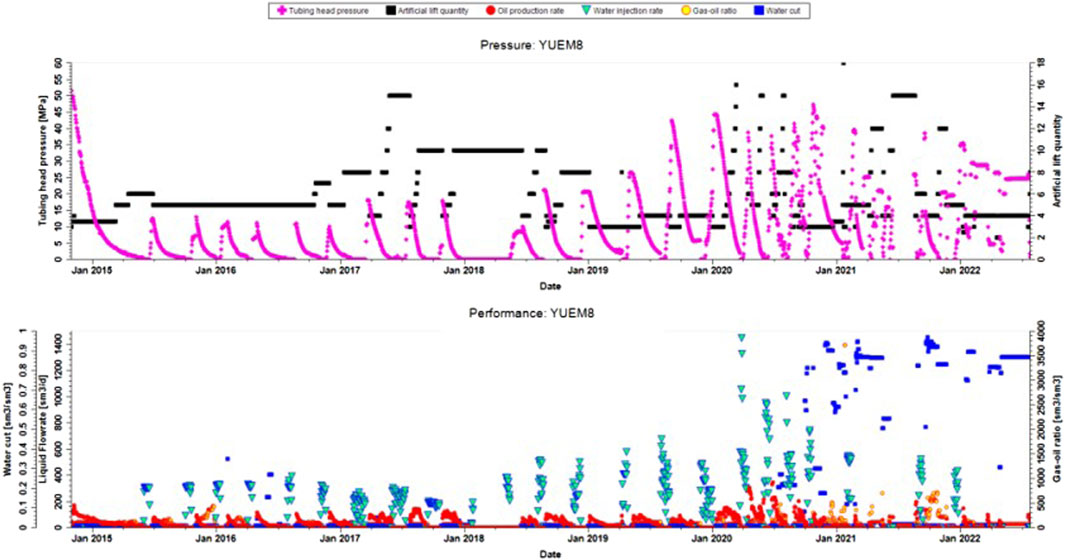
Figure 3. No/low water content in the initial stage after waterflood, and high-water content in the late stage—rapid differentiation (Type 1).
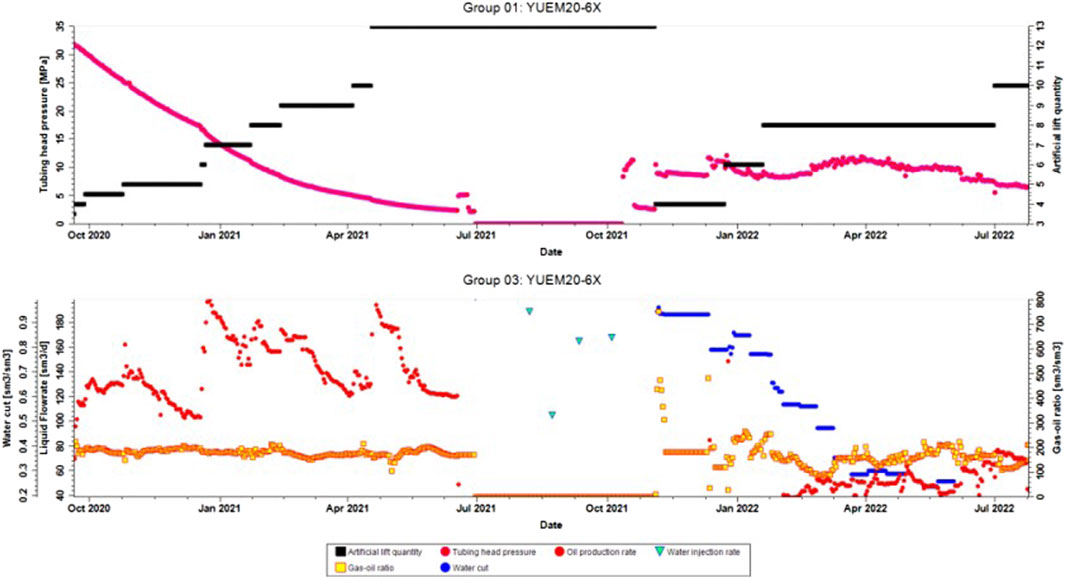
Figure 4. High water content in the initial stage after waterflood and decreased water content in the late stage—moderate differentiation (Type 2).

Figure 5. No water content before waterflood, but constantly high-water content after waterflood—slow differentiation (Type 3).
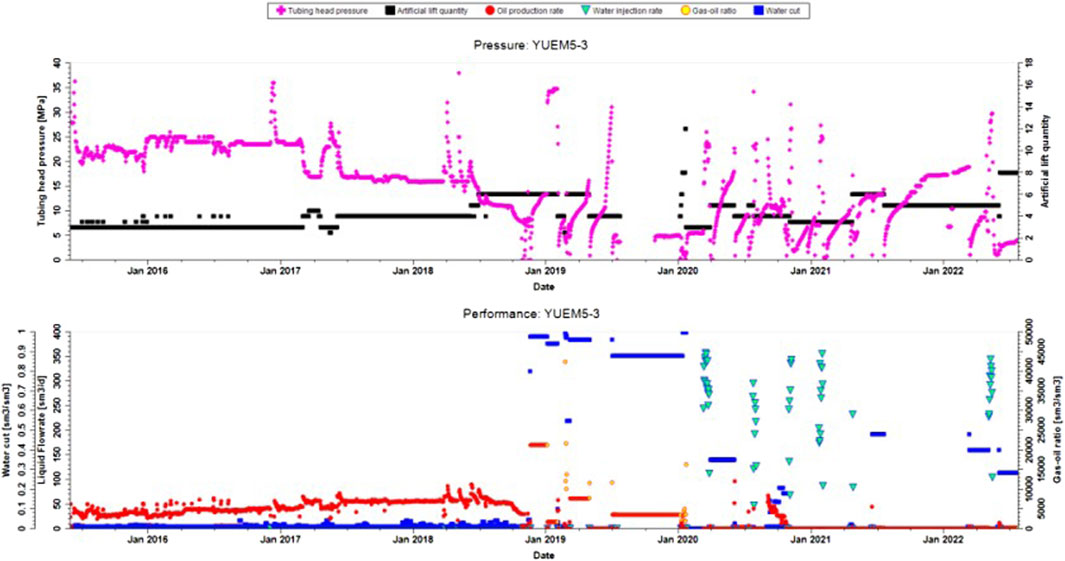
Figure 6. High bottom water content before waterflood, but constantly high-water content after waterflood—slow differentiation (Type 4).
2.4 Optimal selection of classification and evaluation methods for oil displacement volume by waterflood huff-puff
In this study, the violin plot, histogram, box plot, and radar chart are compared and analyzed to provide a more intuitive expression of statistical laws. Each graphic has its specific advantages in expression method. For oil development indicators with more data points, box plot and violin plot enable to express the distribution probability more directly in a certain data interval.
There are five key points in Figure 7, including the median (a white point on the violin plot), quartile range (black bar in the center of the violin plot), lower/higher adjacent values (black bar chart, defined as the first quartile-1.5 IQR and the third quartile + 1.5 IQR, respectively). These values can be used for identifying outlier detection technique, that is, values outside these “fences” are regarded as outliers; Finally, it is worth noting that if the quartile of the data remains unchanged, the box chart will be unchanged. When the data is modified, the distribution pattern significantly changes but the quartiles remain unchanged.
Compared with previous technical methods, the new method proposed is this study has advantages in four aspects:
1) The differences in reservoir geological genesis and structure characteristics of reservoir space among various karst zones are considered. 2) Based on the changes in production performance, the difference in internal filling features of the same type of reservoirs is integrally determined. 3) The actual development characteristics of waterflood huff-puff oil displacement wells in various karst zones are systematically analyzed, and the criteria for selecting standard wells is formulated, so the predicted oil production increase in new wells by waterflood huff-puff oil displacement is more in line with field development practices. 4) The violin plot enables to reflect the proportion of oil displacement volume more intuitively and truly by waterflood huff-puff of various types of reservoirs with different internal spatial structures. Therefore, the new method can better predict the oil production increase by waterflood huff-puff in various karst zones.
3 Technical process
The general idea of the new method for predicting oil displacement volume by waterflood huff-puff includes six key steps:
Step 1: Establish a standard well database for analyzing the oil displacement volume by waterflood huff-puff;
Step 2: Classify the equivalent reservoir space types within the well-controlled range based on the single well production performance;
Step 3: Systematically analyze the characteristics of waterflood huff-puff oil displacement of standard wells and further determine the type of internal spatial structure of the reservoir;
Step 4: Calculate the key evaluation indicators of each standard well;
Step 5: Integrally classify and prepare violin plots for key evaluation indicators;
Step 6: Based on the violin plot, perform statistics on the main distribution intervals of oil displacement volume by waterflood huff-puff of various types of reservoirs, and finally provide a reference proportion of oil displacement volume by waterflood huff-puff given the specific conditions. The technical flowchart is shown in Figure 8.
4 Results and discussion
In this study, more than 800 wells targeting at the Ordovician fractured-cavity type carbonate oil reservoirs in the northern Tarim Basin are systematically analyzed. Based on the technical process, the standard well database is established by using data of 127 wells, which are mainly located in the interlayer karst zone and the fault-controlled zone but few in the buried hill karst zone (excluded in this study) (Figure 9). The obtained oil displacement volume by waterflood huff-puff based on this standard well database will support to predict oil production increase for oil wells in the same area that have not yet conducted waterflood huff-puff oil displacement or are in the early stage of waterflood huff-puff oil displacement.
In this study, the oil displacement volume by waterflood huff-puff is predicted at two levels:
The first level is to conduct analysis and evaluation of the oil displacement results by waterflood huff-puff of various types of reservoirs in various zones, including the interlayer karst zone and the fault-controlled zone; The second level is to conduct a detailed classification for reservoir types in various karst zones based on the development dynamics after waterflood huff-puff oil displacement (Table 1), finely predict the oil displacement volume of each type of reservoirs controlled by well, and calculate the main distribution interval.
Based on the standard well database, a macroscopic analysis is conducted for various types of reservoirs (i.e., multi cave type, isolated cave type, and fractured-vuggy type) in single wells in various karst zones, obtaining the overall oil displacement results by waterflood huff-puff as follows: Multi cave type reservoirs (large-scale)>relatively isolated cave type reservoirs>fractured-vuggy type reservoirs, and relatively high cumulative oil production of multi cave type reservoirs in a few wells, with waterflood oil displacement volume accounting for more than 60%.
4.1 The fault-controlled zone
The analysis of various equivalent reservoir types in the fault-controlled zone is conducted, and the violin plot is used to analyze the main distribution intervals of the displacement rate and the proportion of oil displacement volume by waterflood huff-puff, with study results shown in Figure 10 and 11. And part of the data as shown in Table2.
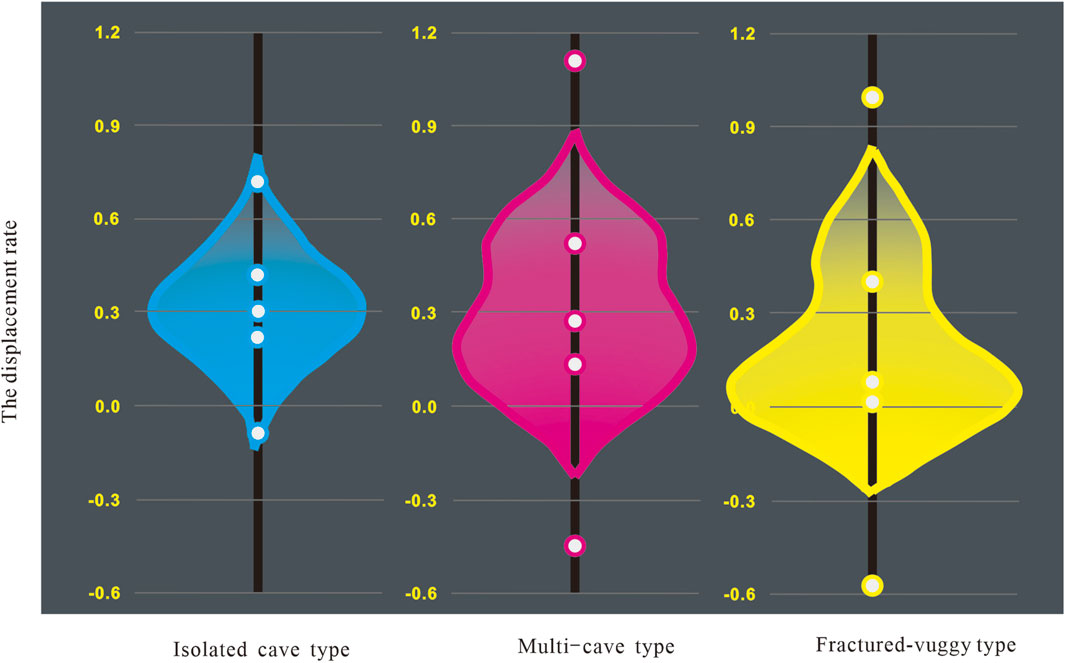
Figure 10. Violin plot of displacement rate of waterflood oil displacement of various reservoir types in the fault-controlled zone.
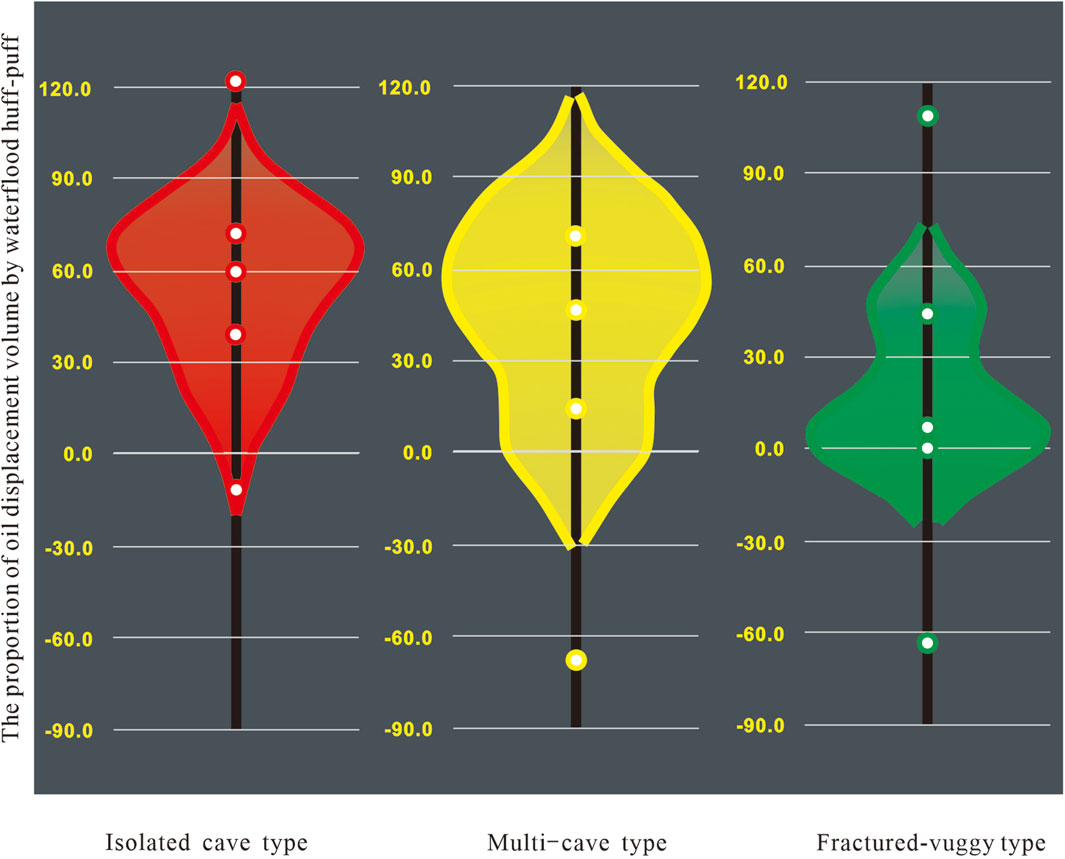
Figure 11. Violin plot of the proportion of waterflood oil displacement volume of various reservoir types in the fault-controlled zone.
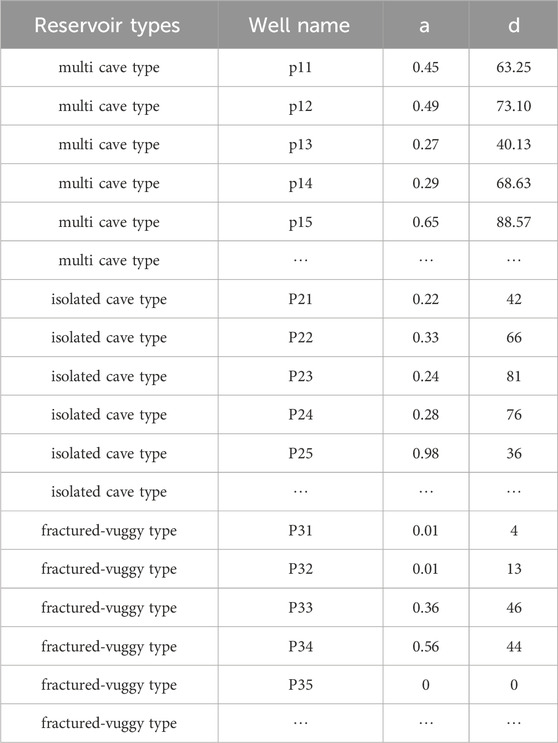
Table 2. Single well data of displacement rate and proportion of oil displacement volume by waterflood huff-puff of various types of reservoirs in the fault-controlled zone.
The key nodes and pattern of the violin plot are summarized and analyzed (Table 3), which indicate that the larger the fluctuation amplitude of various quantiles in the violin plot, the more concentrated the data points are. The results show that the displacement rate of waterflood oil displacement in the fault-controlled zone is 0.13 t/m3 (25% quantile) of multi cave type reservoirs, 0.31 t/m3 (median) of isolated cave type reservoirs, and 0.01 t/m3 (25% quantile) of the fractured-vuggy type reservoirs, respectively; The proportion of waterflood oil displacement volume is 73.89% (75% percentile) of multi cave type reservoirs, 70.75% (75% percentile) of isolated cave type reservoirs, and 1.07% (25% percentile) of the fractured-vuggy type reservoirs.

Table 3. Summary of displacement rate and proportion of oil displacement volume by waterflood huff-puff of various types of reservoirs within the well-controlled range in the fault-controlled zone.
Take HD24-1C for example, that it doesn’t been used in the analysis. The performance of the well is shown in Figure 12. And the cumulative oil production during flow period is 3841t, by analyzing the production performance curve, this well belongs to an isolated cave type. According to the analysis results in Table 3 the proportion of waterflood oil displacement volume is 70.75%, so the predict waterflood oil production increase is 9290.6t and the cumulative oil production is 13,131.6t. And the actual cumulative oil production of the well is 12,921.4t. The error is only 1.6%, indicating that the method is in good agreement with the on-site production situation.
4.2 Interlayer karst zone
The analysis of various equivalent reservoir types in the interlayer karst zone is conducted, and the violin plot is used to analyze the main distribution intervals of the displacement rate and the proportion of oil displacement volume by waterflood huff-puff, with study results shown in Figure 13 and 14. And part of the data as shown in Table 4.
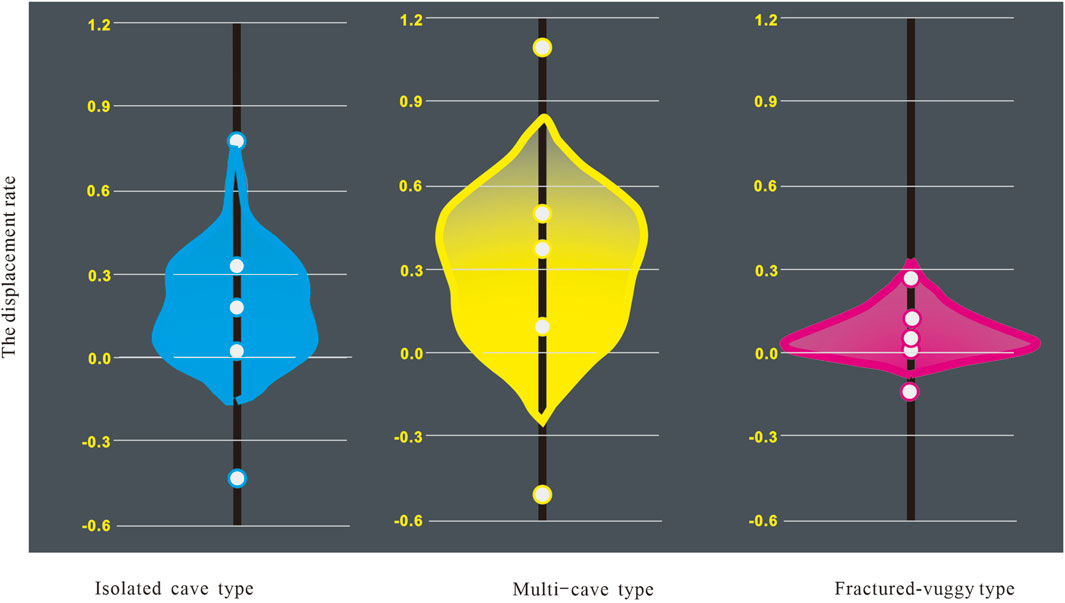
Figure 13. Violin plot of displacement rate of waterflood oil displacement of various reservoir types in the interlayer karst zone.
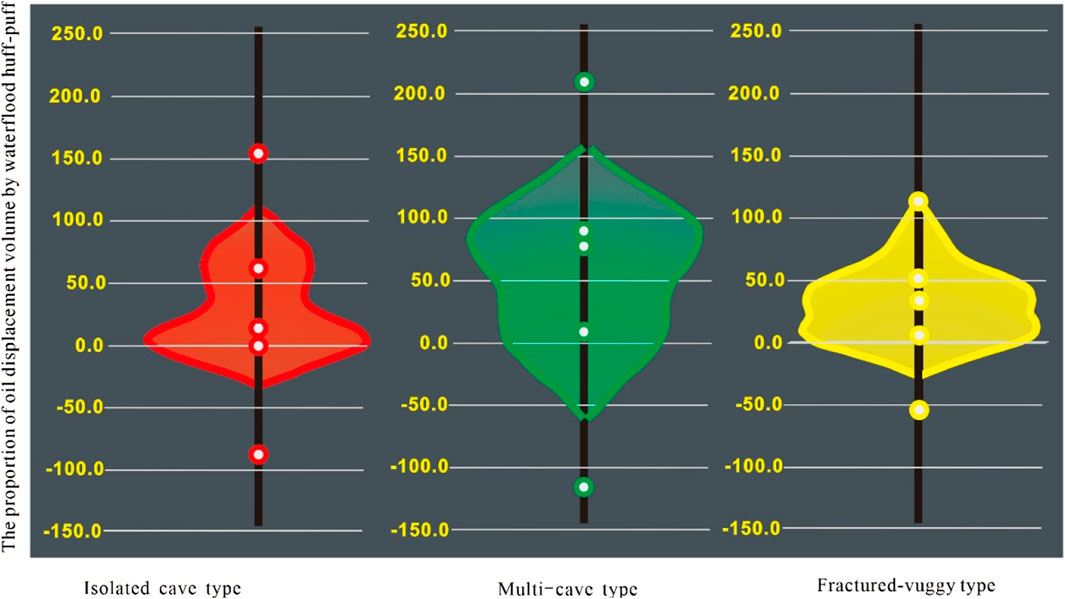
Figure 14. Violin plot of the proportion of waterflood oil displacement volume of various reservoir types in the interlayer karst zone.
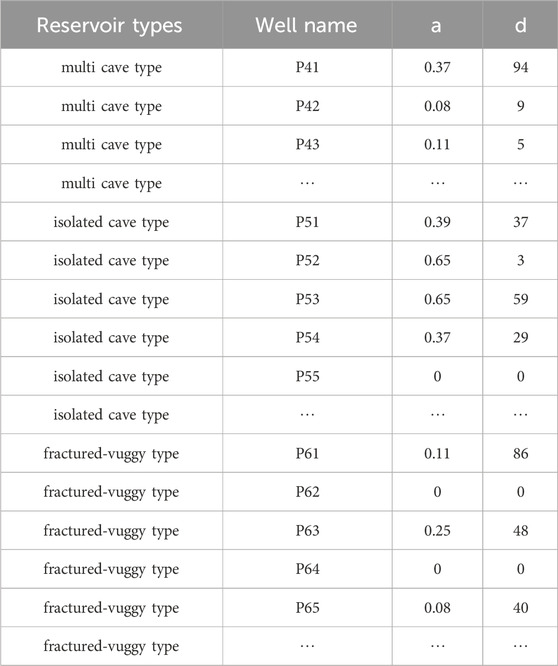
Table 4. Single well data of displacement rate and proportion of oil displacement volume by waterflood huff-puff of various types of reservoirs in the interlayer karst zone.
The key nodes and the pattern of the violin plot are summarized and analyzed (Table 5), which indicate that the larger the fluctuation amplitude of various quantiles in the violin plot, the more concentrated the data points are. The results show that in the interlayer karst zone, the displacement rate of waterflood oil displacement is 0.50 t/m3 (75% quantile) of multi cave type reservoirs, 0.32 t/m3 (75% quantile) of isolated cave type reservoirs, and 0.01 t/m3 (25% quantile) of the fractured-vuggy type reservoirs, respectively; The proportion of waterflood oil displacement volume is 88.47% (75% percentile) of multi cave type reservoirs, 1.78% (25% percentile) of isolated cave type reservoirs, and 4.78% (25% percentile) of the fractured-vuggy type reservoirs.

Table 5. Summary of displacement rate and proportion of oil displacement volume by waterflood huff-puff of various types of reservoirs in the well-controlled range in the interlayer karst zone.
The analysis of production performance data shows that the displacement rate and the proportion of waterflood oil displacement volume of the equivalent isolated cave type reservoirs are better than those of multi cave type reservoirs in the fault-controlled zone, which is mainly caused by the “plate-like” distribution feature, limited lateral distribution range, and poor vertical and lateral connection of this type of reservoirs. The fractured-cavity type reservoirs in the fault-controlled zone are more dispersed and poorly connected, and the internal reservoir space is dominated by inter-breccia pores. Therefore, the degree of oil-water differentiation after waterflood is lower than that in the interlayer karst zone; The reservoirs in the interlayer karst zone are generally developed along the bedding, showing relatively good lateral continuity, and the reservoir space is relatively large after long-period dissolution by atmospheric fresh water. Therefore, the waterflood huff-puff oil displacement results are better given the same conditions; Due to the more dispersed and limited reservoir space, the displacement rate and proportion of oil displacement volume by waterflood huff-puff are relatively low of the fractured-vuggy type reservoirs in various karst zones.
5 Conclusion
In this study, a systematic study is conducted on the prediction method of single well oil displacement volume by waterflood huff-puff of the fractured-cavity type carbonate oil reservoirs. To ensure that the study results are consistent with the field practice, the fractured-cavity type carbonate reservoirs are classified into various zones based on the genesis, and comparative analysis is conducted on reservoirs between the interlayer karst zone and the fault-controlled zone, with the main conclusions as follows:
(1) Based on the basic idea of data analysis, a standard well database is established for predicting the oil displacement volume by waterflood huff-puff of the fractured-cavity type oil reservoirs. On this basis, two key indicators are selected, namely, the displacement rate and the proportion of oil displacement volume by waterflood huff-puff, laying a good foundation for the promotion and application of the study results in areas with same the type of reservoirs;
(2) By considering the multi-solution of geophysical data in predicting the spatial structure characteristics of this type of reservoirs, and fully applying the production performance data and the change characteristics in the early stage of waterflood, as well as the production and water content changes in the waterflood huff-puff oil displacement stage, the more detailed classification and evaluation of the equivalent reservoirs in the well-controlled range are conducted, which is more targeted for predicting the oil displacement volume by waterflood huff-puff in other oil wells in the future;
(3) For reservoir types controlled by many sample wells (more than 10 wells), the violin plot is used for analyzing the probability distribution intervals of key development indicators, which enables to reflect the main distribution intervals of the proportion of oil displacement volume and displacement rate more intuitively by waterflood huff-puff of various types of reservoirs, and the predicted results have more guiding significance;
(4) By taking the fractured-cavity type carbonate oil reservoirs in the Ordovician Yijianfang Formation in the northern Tarim Basin in western China as an example, the oil displacement volume by waterflood huff-puff in the fault-controlled zone and the interlayer karst zone is analyzed in detail. Due to the influence of reservoir distribution pattern and genesis, waterflood huff-puff oil displacement is more applicable for oil development in the interlayer karst zone. From the perspective of reservoir types, the development results by waterflood huff-puff oil displacement are better of the large-scale fractured-cavity type reservoirs (dominated by cavity type reservoirs) with relatively closed and weak water energy.
In summary, the method is studied specifically aiming at predicting the single well oil displacement volume by waterflood huff-puff of the fractured-cavity type carbonate oil reservoirs with high reservoir heterogeneity. In the process of predicting the oil production increase by waterflood huff-puff in single wells, various production dynamic and static data are fully used, a standard well database is established, and development evaluation indicators are optimally selected for key issues. The research results enable to better predict the oil displacement volume by waterflood huff-puff of oil reservoirs in various karst zones, with various reservoir types and internal structure characteristics, and better support the fine development of the fractured-cavity type carbonate oil reservoirs.
Data availability statement
The original contributions presented in the study are included in the article/Supplementary material, further inquiries can be directed to the corresponding author.
Author contributions
CP: Conceptualization, Funding acquisition, Investigation, Methodology, Writing–original draft. WP: Formal Analysis, Writing–review and editing. LZ: Investigation, Methodology, Writing–review and editing. CJ: Formal Analysis, Methodology, Writing–review and editing. LG: Formal Analysis, Resources, Writing–review and editing. Yifan Du: Formal Analysis, Methodology, Writing–original draft.
Funding
The author(s) declare that financial support was received for the research, authorship, and/or publication of this article. This study is funded by the CNPC (China National Petroleum Corporation) Scientific Research and Technology Development Project (Grant No. 2021DJ1501). The funder was not involved in the study design, collection, analysis, interpretation of data, the writing of this article, or the decision to submit it for publication.
Acknowledgments
We thank the PetroChina Tarim Oilfield Company for providing the dynamic data.
Conflict of interest
Authors CP, CJ, and DY were employed by China National Petroleum Corporation. Authors WP, LZ, and LG were employed by PetroChina Tarim Oilfield Company.
Publisher’s note
All claims expressed in this article are solely those of the authors and do not necessarily represent those of their affiliated organizations, or those of the publisher, the editors and the reviewers. Any product that may be evaluated in this article, or claim that may be made by its manufacturer, is not guaranteed or endorsed by the publisher.
References
Cao, P., Chang, S., Chuanrui, D., et al. (2014). Brief analysis on water-flooding development of fractured-cavity type of carbonate reservoirs —by taking lunguxi buried hill reservoir for example. J. Oil Gas Technol. 36 (03), 121–125.
Chen, S. (2004). Characteristics of ordovician palaeokarst reservoir in the western region of lungu, talimu basin. J. XI'AN SHIYOU Univ. 19 (4), 9–12.
Cheng, H., Lu, Y., Cao, Z., et al. (2022). Division and formation mechanism of fault-controlled fracture-vug system of the Middle-to-Lower Ordovician, Shunbei area, Tarim Basin. Oil Gas Geol. 43 (01), 54–68.
Ding, Z., Wang, R., Chen, F., et al. (2020). Origin, hydrocarbon accumulation and oil-gas enrichment of fault-karst carbonate reservoirs: a case study of Ordovician carbonate reservoirs in in South Tahe area of Halahatang oilfield, Tarim Basin. Petroleum Explor. Dev. 47 (2), 286–296. doi:10.11698/PED.2020.02.07
Gu, Yu, Song, Y., Zheng, W., et al. (2012). Research on water injection for oil replacement and well selection technology in fractured and caved reservoirs. Neijiang Technol. (11), 136–137.
Guo, S., Zhao, H., Hongjun, D., et al. (2008). Research and application of water injection oil replacement technology in fractured and caved carbonate reservoir. Petroleum Geol. Eng. 22 (5), 118–120.
Guohui, Li, Yuan, J., Luo, H., et al. (2015). Quantitative description technology for fracture-cavity carbonate reservoirs in halahatang area, Tarim Basin. China Pet. Explor. 20 (04), 24–29. doi:10.3969/j.issn.1672-7703.2015.04.0
Jin, Z., Hong, W., Peng, C., et al. (2017). Practice and exploration of water injection technology in carbonate oilfield of halahatang oilfield. China Petroleum Chem. Stand. Qual. 37 (21), 176–177.
Kang, Z., Zhao, Y., and Zhang, J. (2011). Evaluation method of water-flooding development effect in fracture-cavity type carbonate reservoitr. Petroleum Geol. Oilfield Dev. Daqing 30 (4), 56–58. doi:10.3969/J.ISSN.1000-3754.2011.04.013
Liu, W. (2007). Water-flooding and replacing oil technology for reservoir and percolation body with constant volume in the ordovician carbonate reservoir in tahe oilfield. Drill. Prod. Technol. 30 (5), 30–32.
Liu, B., Qi, L., Zongjie, L. I., et al. (2020). Spatial characterization and quantitative description technology for ultra-deep fault-karst reservoirs in the Shunbei area. ActaPetroleiSinica 41 (4), 412–420.
Luo, J., Chen, X., Xingwan, Tu, et al. (2007). Study on the mechanism of single well water injection for oil replacement in tahe fractured and caved reservoir. Petroleum Geol. Eng. 21 (2), 52–54.
Luo, J., Wang, L., and Yuanshuai, R. (2008). Research on water injection pressure cone in Tahe fractured and vuggy carbonate reservoir. Petroleum Geol. Eng. 22 (2), 69–71.
Lyu, X., Sun, J., Wu, X., et al. (2021). Internal architecture characterization of fractured-vuggy carbonate reservoirs: a case study on the Ordovician reservoirs, Tahe Unit S67, Tarim Basin. Oil Gas Geol. 42 (3), 728–737.
Ren, W., and Xu, K. (2012). Fuzzy comprehensive evaluation of water injection replacement effect in carbonate reservoir. Gasf. Surf. Eng. 31 (12), 36–37.
Shuang, Li, and Yun, Li (2010). An experimental research on water injection to replace the oil in isolated caves in fracture-cavity carbonate rock oilfield. J. of Southwest Petroleum Univ. Seience Technol. Ed. 32 (1), 117–120.
Sun, D., Yang, L., and Wang, H. (2015). Strike-slip fault system in Halahatang area of Tarim Basin and its control on reservoirs of Ordovician marine carbonate rock. Nat. GasGeoscience 26, 80–87. S1.
Xingwan, Tu (2008). Successful practice for carbonate reservoir development by cyclic water injection process. Xinjiang Pet. Geol. 29 (6), 735–736.
Xiujuan, Li, and Guangqing, H. (2009). Study on waterflood development of fractured-cavity type carbonatite hydrocarbon reservoirs in tahe oilfield. J. of Jianghan Petroleum Univ. Staff Work. 22 (6), 57–60.
Xue, J., Liu, Y., Zhu, W., et al. (2016). The type of reservoirs encountered by the wells in the halahatang oilfield and water flooding effects. Pet. Drill. Tech. (1), 85–89. doi:10.11911/syztjs.201601016
Xuqiang, B. U., Laiyuan, WANG, Lianhua, Z. H. U., et al. (2023). Characteristics and reservoir accumulation model of Ordovician fault-controlled fractured-vuggy reservoirs in Shunbei oil and gas field,Tarim Basin. Lithol. Reserv. 35 (3), 152–160.
Yang, H., Deng, X., Zhang, Y., et al. (2020). Great discovery and its significance of exploration for Ordovician ultra-deep fault-controlled carbonate reservoirs of Well Manshen 1 in Tarim Basin. China Pet. Exporation 25 (3), 13–23. doi:10.3969/j.issn.1672-7703.2020.03.002
Yong, L. I., Xiaojuan, D., Chaozhong, NING, et al. (2022). “Second quantitative characterization” of fracture-cavity reservoirs with combination of dynamic and static data considering uncertainties. Petroleum Explor. Dev. 49 (4), 1–11. doi:10.11698/PED.20210756
Yuan, Y. (2020). Study on the characteristics of strike-slip faults in the north section of No 5 Shunbei and its controlling and storage effect. Beijing: China University of Petroleum.
Yuanshuai, R., Huang, Y., Liu, X., et al. (2008). Single well water injection production in tahe fracture-vuggy reservoir. Pet. Drill. Tech. 36 (4), 57–60.
Zhang, Q., Fengrui, Q., Bin, L., et al. (2017). Paleogeomorphology and karst reservoir development of ordovician carbonate in halahatang area, northern Tarim Basin. Geol. Sci. Technol. Inf. 36 (01), 168–175. doi:10.19509/j.cnki.dzkq.2017.0120
Zhang, W., Taizhong, D., Zhao, H., et al. (2021). Hierarchical characteristics and 3D modeling of fault-controlled paleokarst systems: a case study of shunbei1 strike-slip fault zone. Sci. Technol. Eng. 21 (28), 12094–12108.
Zhao, W. Z., Shen, A. J., Hu, A. P., Zhou, J. G., and Ni, X. F. (2015). A Discussion on the geological background of marine carbonate reservoirs development in Tarim, Sichuan and Ordos Basin, China. Acta Petrol. Sin. 31 (11), 3495–3508.
Keywords: fractured-cavity type oil reservoir, oil production increase by waterflood huff-puff, displacement rate, standard well database, violin plot
Citation: Peng C, Peng W, Zhiliang L, Jiajun C, Guohui L and Yifan D (2024) A new method for predicting the oil displacement volume by waterflood huff-puff of the fractured-cavity type carbonate oil reservoirs. Front. Energy Res. 12:1339489. doi: 10.3389/fenrg.2024.1339489
Received: 16 November 2023; Accepted: 29 March 2024;
Published: 10 April 2024.
Edited by:
Edward Anthony, University of Ottawa, CanadaReviewed by:
Abdulaziz Ellafi, TenEx Technologies, United StatesHao Yu, Southwest Petroleum University, China
Copyright © 2024 Peng, Peng, Zhiliang, Jiajun, Guohui and Yifan. This is an open-access article distributed under the terms of the Creative Commons Attribution License (CC BY). The use, distribution or reproduction in other forums is permitted, provided the original author(s) and the copyright owner(s) are credited and that the original publication in this journal is cited, in accordance with accepted academic practice. No use, distribution or reproduction is permitted which does not comply with these terms.
*Correspondence: Cao Peng, MzQ2OTE3OTAwQHFxLmNvbQ==
 Cao Peng
Cao Peng Wang Peng3
Wang Peng3 Chen Jiajun
Chen Jiajun